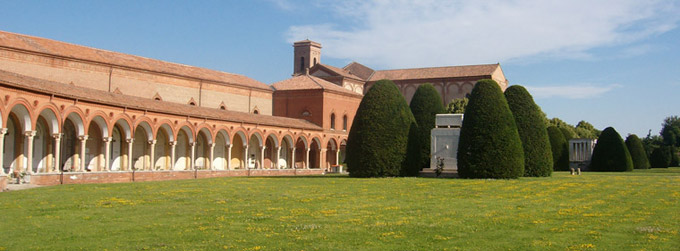 The cemetery of Certosa
One of the main historical and artistic monuments of the Renaissance is the Certosa di Ferrara, Ferrara, one of the largest architectural complex in the city. This beautiful cemetery began as a monastery for the Order of the Carthusians in 1461 until the end of 1700, when the hands of Napoleon, the suppression of religious orders and the confiscation of church property permanently away from the Carthusian monastery at the time città.Da Herculean nell'Addizione was incorporated, which provided an important expansion of the city and it doubles the size, making it monumentale.Il cemetery project was entrusted to the architect of the Este court official Biagio Rossetti by Duke Ercole d'Este in 1498 beginning Work on the construction of the new church, the Basilica of St. Christopher, a temple surrounded by the immense courtyard.
The Certosa cemetery houses the graves of famous people and famous painters, and here there are preserved the graves of: Giovanni Boldini, master painter and restorer purist (a pupil of Tommaso Minardi), the famous painter from Ferrara Gaetano Previati (representative of an exponent current divisiveness Italian) and the Italian painter Filippo de Pisis. It is said that Boldini execute good copies of the works of Raphael and Italian painters.
The cemetery is dominated by the church of St. Christopher, one of the most original works of Renaissance Ferrara, in fact, is set in a pattern of a Latin cross with a nave and twelve side chapels. On the façade stands out in contrasting colors the white marble of the classic eighteenth-century portal worked with Renaissance motifs. The interior has a nave with six chapels on each side, every two strong pillars arches arise with the bases decorated with the emblems of the marble bas-reliefs depicting Duke Borso, of Hercules by Alfonso I and I and a deep apsidal presbytery. This church also has wonderful works of art of great prestige and importance in fact we can be fascinated by the large painting by Carlo Bononi with the wedding of Chana, two small oils on copper depicting the Last Supper of Augustine and the collection of the manna by Ludovico Carracci .
The tomb of the duke Borso
The Duke Borso d'Este in Ferrara was born in 1413 as the illegitimate son of Nicholas III.
After a period of militancy in the Republic of Venice and the Duchy of Milan, the Duke returned to Florence and joined his brother Lionel in the government up to succeed him in 1450, under his rule Ferrara through a growth period of peace and embellishment of monuments and works of art such as the cemetery of the monastery located in the historic area of Ferrara.
The cemetery was created between 1452 and 1461 at the behest of the Duke Borso d'Este to mark its ostentatious religion wanted to build a monastery for the Order of Carthusians settled where they remained for over three centuries, until 1800 when it was transformed in the cemetery.
The Duke Borso died in 1471 and his tomb is hosted from this cemetery. |